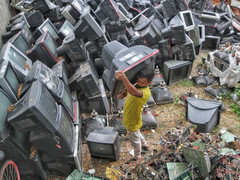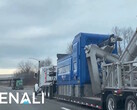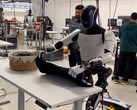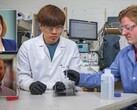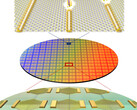Rare earths are not as rare on our planet as the name suggests. The problem lies in their lack of purity. As ores, they are often mixed together, making complex and energy-intensive separation processes necessary.
The situation is not any better later, when they are used in telephones, fluorescent tubes and electronic components and end up as waste. However, the concentration of the coveted elements in a mountain of electronic waste is significantly higher than in the ground.
However, separation processes, which often make use of the different melting points of the metals, require enormous amounts of energy. Parts have to be dismantled beforehand, plastic sorted out and impurities removed.
Recycling therefore always remains the second choice because it is cheaper to mine the rare earths directly. And mountains, i.e. actually dumps, filled with tons of important raw materials are left lying around.
The example of europium shows what is possible
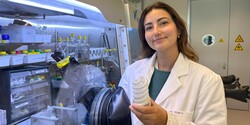
This is one of the reasons why a process has now been presented at ETH Zurich that can speed up the separation of different raw materials by a factor of 50. A method has been developed there to extract europium, which is used in fluorescent tubes, cathode ray tube screens (the good old tube TV), but also in some modern displays.
However, because it is used less frequently than in the past, the price of the raw material is too low for traditional recycling processes. A principle with which enzymes regulate our copper balance, among other things, uses a promising approach.
Europium is reduced with the help of tetrathiometalates, in this case four sulphur atoms and one molybdenum or tungsten atom. While the other rare earths remain trivalent, europium becomes bivalent. It now has one more electron.
This means that it reacts differently in chemical reactions and can be easily separated from the other elements. The principle is said to work so well in fluorescent tubes that it can already be used.
We can only hope that such elegant ways of efficient and therefore sustainable recycling can also be found for other elements. After all, the solution was hidden in an endogenous enzyme.




